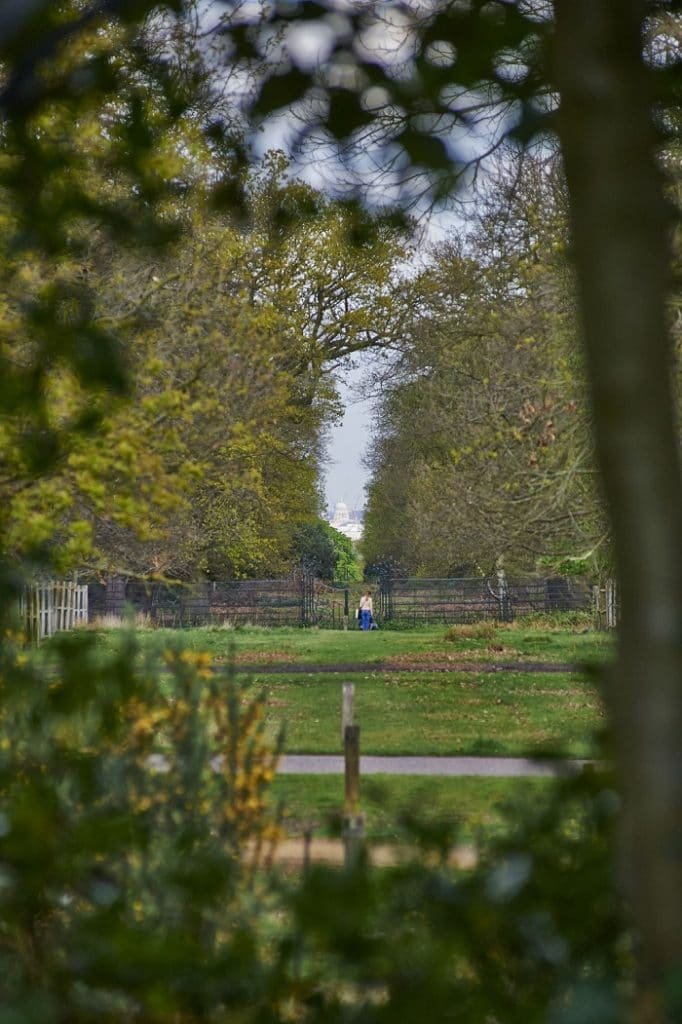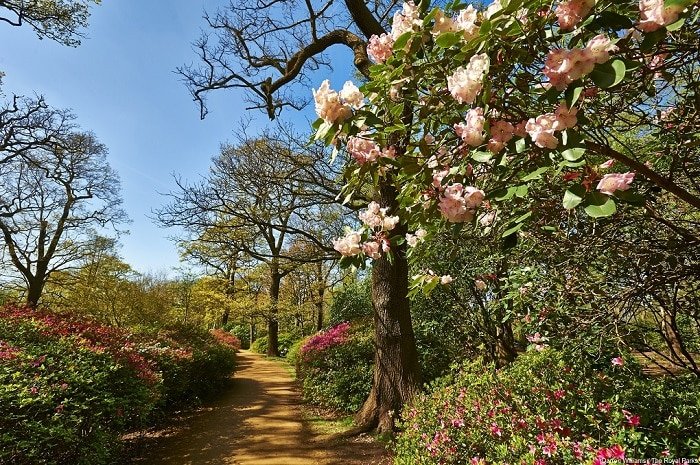
If you’re new to London, or just visiting, you might think chances to see a bit of nature are limited to the big parks (full of tourists) or to the weekend, when you can escape to the countryside. Yet England’s capital is actually bursting with relaxing gardens, tranquil woodland walks and wetlands… if you know where to look. In this occasional series, we’ve been exploring some of London’s many green spaces.
Richmond Park is not exactly a lesser-known spot. Nor is it in central London. But to not visit would be to miss out on some magnificent green space, not to mention some wonderful views of the city.

A Royal Park with a Long History
King Charles I created London’s largest royal park, covering 2,500 acres, in the early 17th century. However, it had been an area popular with kings for many centuries before. Edward I of England hunted and rode here in the 13th century, when it was known as Manor Sheen. Later, Henry VII would change its name to Richmond.

It became an official park in the 1600s. Plague was rampant in London and so the royal household relocated here to enjoy some cleaner air. The king decided to make it a deer park, and he enclosed the area that we now know as Richmond Park. At the time, the move was not a popular one among locals who were furious that they might be denied access to the land. No doubt cognisant of how important we Brits consider our right of way, Charles reassured the public that pedestrian access was still permitted. An Act of Parliament in 1872 later guaranteed full public access.
The public continues to enjoy the wonderful lands of Richmond Park to this day. It provides an array for opportunities for outdoor fun, from hiking and bicycle trails to fishing and even rugby. Richmond Park was designated a Site of Special Scientific Interest in 1992. It also holds designations as a National Nature Reserve and a Special Area of Conservation.
King Henry’s Mound

Within the park’s boundaries, one can visit a number of notable spots. One of the most popular is King Henry’s Mound. The mound is within the grounds of Pembroke Lodge, and archaeologists believe it may have been a burial mound. The view from the mound extends 12 miles to St Paul’s Cathedral and is protected by law. Nothing can be built that would interfere with this view.
According to park lore, the mound is so named because Henry VIII stood here watching for a signal from St. Paul’s Cathedral (the pre-Christopher Wren version) to let him know that Anne Boleyn had been executed at the Tower of London. Upon seeing the signal, he would know that he could marry Jane Seymour. It’s a nice tale but there seems to be little or no evidence to support it. In fact, Henry was in Wiltshire later that day.
Nevertheless, the view is quite impressive. In recent years, the erection of a large tower block has caused something of a scandal. Although the new construction is not within the protected path between the park and St. Paul’s it is clearly visible in the background of the vista. The Mayor of London has since enacted new planning rules to prevent any further blots on the treasured landscape.
Isabella Plantation
A number of flower gardens lie within Richmond Park. My favourite is the Isabella Plantation. Since 1953, visitors have admired the azaleas for which this 40-acre garden is famous.

Pathways wind their way past the ponds, and through the expansive collection of azaleas, camellias, rhododendrons, and other shrubs. Despite the large number of visitors to the park, it is easy to find an isolated spot here to enjoy the tranquility. To witness the best of the floral colour, visit between April and June.
Richmond’s Deer and Other Wildlife
Charles I established Richmond Park as a deer park and its deer population continues to attract millions of visitors each year. More than 600 red and fallow deer roam throughout the park. Show respect for these wild animals by keeping dogs leashed, and by not getting too close. It is quite breathtaking to find yourself walking and to happen upon a group of grazing deer, but admire them from a distance.

Richmond also provides a home to many other species of small mammals, birdlife, and insects. This is an important habitat for a number of beetle species, especially the endangered stag beetle.

Getting There – A Quick Note
The night before I planned to visit Richmond Park, I hopped online to check the easiest route to get there from my Central London hotel. I include this as a caution to you. Google Maps and various other sites all led me through routes that would take several hours and involved multiple trains and buses. I thought this would be quite a trek. Finally, I decided to check the London Underground map myself… and instantly saw that the District Line could take me directly from Tower Hill to Richmond. It took all of 30 to 40 minutes, followed by a pleasant walk from the station to the park itself. So don’t rely entirely on one app to give you directions; they may be ignoring the simplest route.
Several visitor centers around the park have maps available. There are also plenty of refreshment stands.



